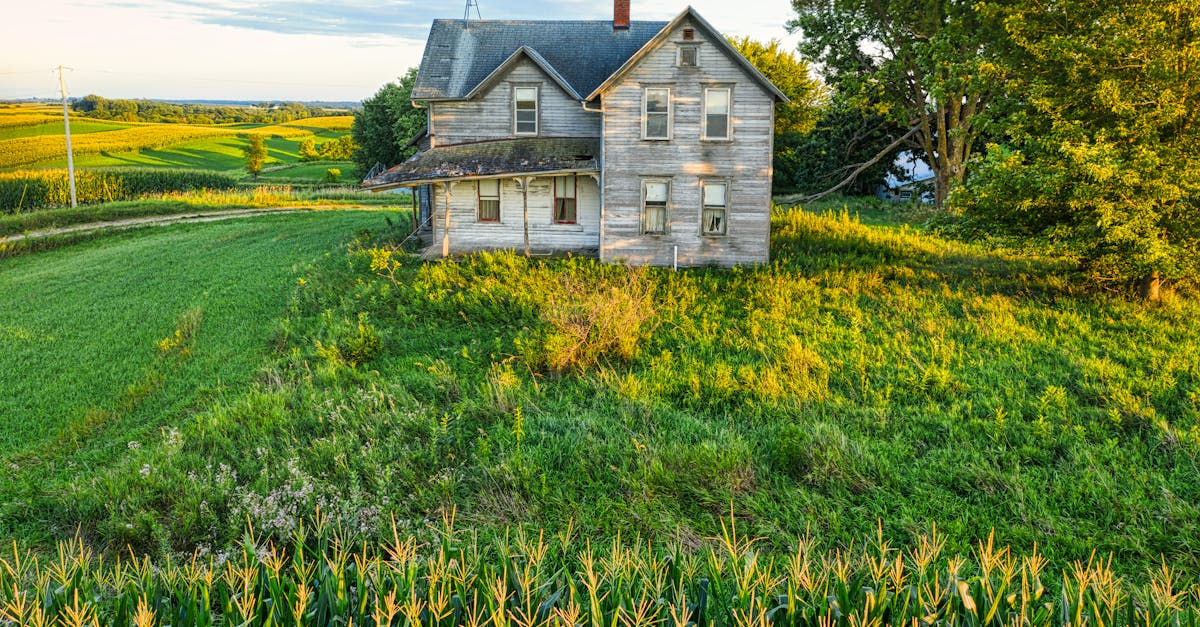Cheap Wales Farm Insurance 2025: Compare Quotes & Top Policies

Key Takeaways
- The average cost of farm insurance in Wales in 2025 is estimated at £1,200 per year, but premiums can vary widely depending on your farm’s size and activities.
- Key factors influencing your Welsh farm insurance quote include the type of cover you need for livestock, machinery, rural property, and liability.
- You can lower your agricultural insurance premium in Wales by comparing quotes from multiple providers and bundling different types of coverage.
- Leading insurers such as FUW Insurance, NFU Mutual, and Lycetts offer tailored policies and expert local advice for Welsh farmers and smallholders.
How Much Does Farm Insurance Cost in Wales in 2025—and How Can You Get the Cheapest Quote?
Running a farm or smallholding in Wales means balancing unique risks, from livestock health to machinery breakdowns and unpredictable weather. With the average annual premium for farm insurance in Wales in 2025 estimated at £1,200, it is easy to pay more than necessary—especially if you have not compared agricultural coverage options recently.
This guide provides everything you need to secure affordable Wales farm insurance in 2025, whether you manage a family farm, tend a smallholding, or seek better value on your current Welsh farm policy. You will learn what impacts your premiums—such as livestock, machinery, and liability cover—how to compare real quotes from top providers, and practical ways to reduce costs without sacrificing protection.
Discover the highest-rated insurers in Wales, must-have features for your farm insurance, and proven tips to help you get the right level of protection at a competitive rate.
How Much Does Farm Insurance Cost in Wales in 2025?
The average cost of farm insurance in Wales for 2025 depends on factors such as farm size, type of operation, region, and the value of buildings, equipment, and livestock. For a small mixed farm, premiums usually start around £1,500 per year, while large commercial holdings in higher-risk regions can pay over £3,000 annually.
Farmers in counties like Powys or Carmarthenshire typically pay lower base rates due to geographic location and risk factors, but average premiums still vary:
| Region | Typical Annual Premium (2025) |
|---|---|
| Powys | £1,500 – £2,300 |
| Carmarthenshire | £1,600 – £2,400 |
| Gwynedd | £1,800 – £2,600 |
| Vale of Glamorgan | £2,000 – £3,000 |
| Pembrokeshire | £1,950 – £2,900 |
Your individual farm insurance rate will depend on several personal and operational factors, detailed in the next section.
What Factors Affect Farm Insurance Premiums in Wales?
The cost of your Wales farm insurance in 2025 is influenced by a range of risk factors and policy choices, including:
- Farm size and acreage: Larger farms with extensive land and higher property values typically face higher premiums.
- Type of farming: Arable, livestock, or mixed farms are rated differently based on individual risk profiles and claim histories.
- Property value: The age, replacement cost, construction, and use of farm buildings strongly impact rates.
- Machinery and equipment: Insuring new, high-value, or specialist agricultural equipment increases your total premium.
- Stock and livestock numbers: Higher numbers of animals mean greater exposure to weather, disease outbreaks, and theft.
- Public and employers’ liability limits: Opting for higher liability limits offers better protection but increases the cost.
Megan, who manages a sheep farm in Ceredigion, was quoted a £2,400 premium because she stored fertiliser in a detached, non-alarmed barn. After installing a monitored alarm system and updating her storage practices, her renewal dropped to £1,900.
Understanding precisely how each factor affects your cost empowers you to take targeted steps to control your premium and secure the most competitive Welsh farm insurance.
Types of Farm Insurance Policies Available in Wales
Welsh farmers and smallholders can choose from a variety of insurance policies, each designed for specific operational needs. In 2025, the most common types include:
- Property Insurance: Covers the farmhouse, barns, and outbuildings against damage from fire, severe weather, and theft.
- Machinery and Equipment Cover: Protects tractors, harvesters, and other agricultural equipment from accidental damage or theft.
- Livestock Insurance: Provides compensation for the death or loss of animals due to accident, disease, fire, or theft.
- Crop Insurance: Protects yields against extreme weather, pests, or disease—crucial for arable farms.
- Public Liability Insurance: Covers compensation claims for injury or property damage made by visitors or the public.
- Employers’ Liability Insurance: Legally required if you employ any staff, covering injury or illness sustained during work.
- Environmental Liability Cover: Pays for pollution clean-up, chemical spills, and third-party land contamination.
A balanced mix of these policy types provides the protection your business needs and meets regulatory requirements.
Leading Farm Insurance Providers in Wales (with Comparison Table)
Several major insurers lead the Welsh farm insurance market in 2025, each offering unique features, pricing, and expert local support:
| Insurer Name | Notable Features | Avg. Premium (2025) | UK-Wide Coverage? |
|---|---|---|---|
| NFU Mutual | Specialist in agriculture, local agents | £2,100 | Yes |
| Farmers’ Union of Wales | Tailored policies for Welsh producers | £1,950 | Wales only |
| Aviva | Flexible, combined farm polices | £2,000 | Yes |
| RSA | Broad machinery and liability options | £2,150 | Yes |
| Zurich | Strong loss-prevention support | £1,980 | Yes |
To see policy features and real prices for your operation, use our Wales farm insurance comparison tool before you renew or switch.
Step-by-Step: How to Get a Cheap Farm Insurance Quote in Wales
You can unlock the best agricultural coverage in Wales by following these tried-and-tested steps:
- Gather All Details: Collect up-to-date figures on acreage, property values, machinery inventory, livestock numbers, and revenue.
- Identify Essential Coverages: Choose only the policies crucial for your farm. Avoid unnecessary add-ons that increase costs without added benefit.
- Request Multiple Quotes: Use comparison platforms or consult local brokers to obtain at least three quotes from top-rated insurers.
- Check Your Excess Amounts: Consider a higher voluntary excess if you are financially comfortable with it, as this can lower your annual premium.
- Ask About All Possible Discounts: Enquire about savings for security systems, farmer group memberships, or bundling multiple policies under one provider.
Once you have your quotes, check for differences in cover, not just cost, to secure the best value. See tailored rates in minutes with our Welsh farm policy comparison tool and make a fully informed decision for your business.
Farm Insurance Cost Breakdown by Region in Wales (2025 Data Table)
Farm insurance costs in Wales vary considerably by region, reflecting local risks, weather conditions, and property values. Use this 2025 data table to benchmark your expected premium:
| Welsh Region | Small Farm (per year) | Medium Farm | Large Farm | Most Influential Cost Driver |
|---|---|---|---|---|
| Powys | £1,500 | £2,000 | £2,800 | Low crime, rural risk |
| Carmarthenshire | £1,600 | £2,150 | £2,950 | Moderate flood/stock clustering |
| Ceredigion | £1,700 | £2,300 | £3,100 | Coastal storms, livestock |
| Vale of Glamorgan | £1,850 | £2,500 | £3,300 | Higher property value |
| Pembrokeshire | £1,900 | £2,600 | £3,400 | Storm and flood exposure |
Premiums tend to be lower in rural, less flood-prone regions and higher in areas with denser property values, coastal risks, or greater equipment exposure. Comparing your location and farming type gives you the biggest chance to cut your costs.
What Does a Typical Welsh Farm Policy Cover (and Not Cover)?
A standard Welsh farm insurance policy covers the main risks of agricultural businesses, but awareness of exclusions is just as important.
What’s Covered:
- Farm buildings, including the farmhouse and all outbuildings
- Machinery and equipment, such as tractors, ATVs, and specialist plant
- Livestock, with protection against fire, certain diseases, accidents, and theft
- Public liability, typically providing a £5 million limit or more
- Employers’ liability, required for any paid staff
What’s Usually Not Covered:
- Gradual wear and tear or mechanical breakdown, unless specifically added
- Livestock diseases not named in the policy or government “notifiable” lists
- Crops lost to perils not covered (for example, drought, unless crop insurance is purchased)
- Pollution or environmental contamination unless you have environment cover
Rhys, a dairy farmer in Gwynedd, experienced £15,000 of silage damage after a severe storm. While his insurance reimbursed him for damaged buildings and machinery, he received no compensation for the spoiled feed because he had not purchased “consequential loss” cover—highlighting the importance of understanding policy exclusions.
Carefully review your schedule of cover, and always check for any gaps relating to your particular operation and risks.
Wales-Specific Regulations: Legal Requirements for Farm Insurance
Welsh and UK regulations set out minimum insurance standards for all farms and smallholdings:
- Employers’ Liability Insurance: Legally required if you employ staff, even casually or seasonally. The minimum cover is £5 million.
- Motor Insurance: Any farm vehicle used on public roads must have at least third-party insurance.
- Public Liability Insurance: Not a legal requirement but strongly advised. Many contracts, councils, or retail outlets demand proof.
- Environmental Liability Insurance: Required for certain chemicals or for larger livestock businesses under Welsh law.
Maintaining these legal minimums is essential to protecting both your business and your livelihood.
Money-Saving Tips for Farm Insurance in Wales (Practical Checklist)
Reducing farm insurance costs is achievable with a proactive approach and knowledge of insurer discounts specific to Wales:
- Install security alarms, CCTV, and modern locks on all buildings and gated entrances
- Join local farming unions or cooperatives—memberships can yield up to 15% off premiums
- Review and adjust policy limits annually to avoid over-insuring depreciated assets
- Increase voluntary excess levels if affordable to lower premium payments
- Bundle property, vehicles, and liability policies with one insurer for multi-policy discounts
- Request a “no claims discount” if you have a clean claims record in recent years
For a personalised farm insurance checklist and fast, tailored quotes, start with our Wales farm insurance comparison tool today.
How to Compare Farm Insurance Providers and Policies in Wales
Comparing Welsh farm insurance in 2025 means more than focusing on headline price. Prioritise the following when choosing the best provider for your operation:
- Coverage breadth: Check that every essential risk—buildings, machinery, livestock, public liability—is protected.
- Policy exclusions: Scrutinise each policy for common exclusions and ensure they match your risk profile.
- Claims reputation: Online reviews and local farmer recommendations offer valuable insight into providers’ responsiveness and reliability.
- Local agent support: Insurers with local representation in Wales often provide faster, in-person claims processing in emergencies.
- Added value: Some providers offer risk assessments, specialist helplines, or on-farm management advice as standard.
Gareth, who farms near Holyhead, chose a slightly higher premium because the provider guaranteed 24-hour emergency claims support and in-person visits in his county. When a major storm struck, his machinery claim was handled within a week. Swift, local support often justifies a modestly higher annual cost.
Your farm’s requirements are uniquely yours. Use our impartial comparison tool to match your needs with the best policies and value in the Welsh market.
Frequently Asked Questions About Wales Farm Insurance 2025
What is the cheapest farm insurance in Wales?
The lowest-cost agricultural coverage typically goes to smallholders in Powys or Carmarthenshire, especially when using regional unions or bundling policies. Use our platform to compare quotes quickly and see which provider suits your operation best.
Do I need specialist insurance for uncommon livestock or crops?
Yes. Farms with rare breeds, specialist organic crops, or unusual enterprises require custom “bespoke” endorsements. Always declare all non-standard risks to guarantee full coverage without unexpected gaps.
Can I pay monthly for my farm insurance in Wales?
Most Welsh farm policy providers allow monthly payments, though finance charges between 5% and 10% generally apply compared to annual lump-sum payment.
Where can I get official advice or dispute a claim?
Official guidance is available from the Farmers’ Union of Wales, NFU Cymru, and directly from our expert team. Our comparison tool also links to local Welsh specialists for impartial advice.
For more in-depth answers and up-to-date premium data, explore our Wales farm insurance 2025 FAQs or connect with our team for advice tailored to your business.
Compare Top Farm Insurance Quotes in Wales for 2025
Knowing what drives farm insurance costs in Wales—from your local region and operation type to the impact of policy choices and discounts—empowers you to protect your business cost-effectively. The right steps taken today can reduce your risk of costly coverage gaps and help avoid overpaying for a policy that does not fit your unique needs.
Do not leave your farm’s future to chance. Get peace of mind and financial savings by comparing personalised quotes from leading Welsh farm insurance providers. Use our free comparison tool now to view real offers in minutes, and secure tailored protection at the most competitive 2025 rate for your farm in Wales.






